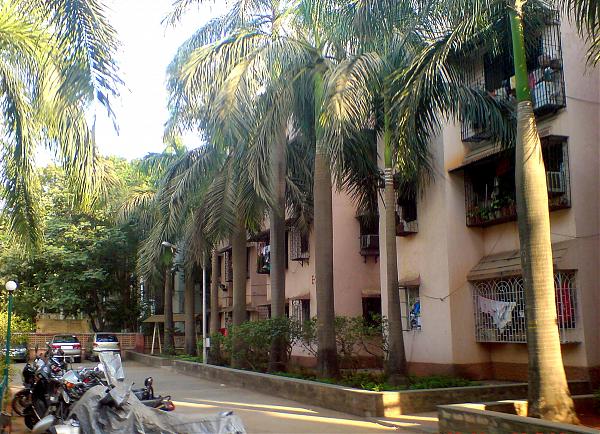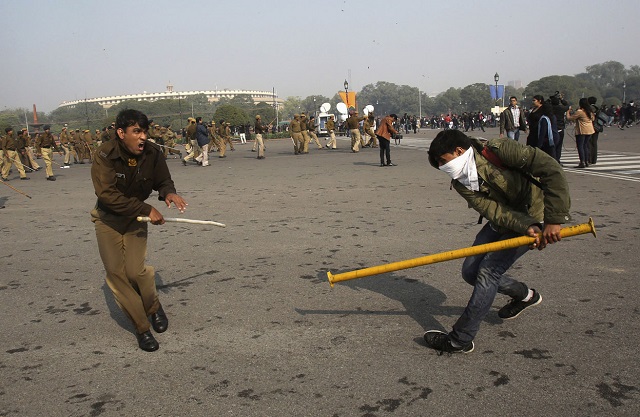A Mumbaikar discovered Paris’ catacombs – those dark winding tunnels that hold the bones and skulls of about six million Parisians.
by Beverley Lewis
Underneath the bustling city of lights, you’ll find a maze of tunnels ─ the Catacombs. Like the Eiffel Tower and the Louvre, Paris’ dark alter ego lies 30 metres underground and has a history of its own. Today, visitors can walk through the catacombs looking at the remains of human skulls and bones arranged in shapes like hearts and crosses. This ‘macabre’ exhibition, while chilling, makes for a fascinatingly unique look into the history of Paris, and is a must-see tourist attraction definitely not for the faint of heart.
 Our destination on an early Saturday morning in Paris are the catacombs, the entrance of which is across the street from the Denfert Rochereau station, which is on both lines 4 and 6 of the Metro. As we make our way, we notice that the great avenues are silent, the shops closed.
Our destination on an early Saturday morning in Paris are the catacombs, the entrance of which is across the street from the Denfert Rochereau station, which is on both lines 4 and 6 of the Metro. As we make our way, we notice that the great avenues are silent, the shops closed.
From a bakery comes the scent of fresh bread. At a stoplight, a blur of movement draws my attention. A man in blue coveralls is emerging from a hole in the sidewalk. His hair falls in dreadlocks, and there is a lamp on his head. The man shoves the iron cover back over the hole and walks away, grinning, down the street. The line moves relatively quickly, even with nearly 25 people in front of us, we only wait 20 minutes. The entrance price is eight Euros.
Once paid, you descend 130 steps and then walk through tunnels for several hundred meters before reaching the catacombs themselves. The ceilings are low, the floors uneven and wet, and the temperature, cool. This is so great, a chance to delve into this rarely-seen aspect of French history and learn about lives cut short by horrific diseases, revolution and the razor sharp edge of a guillotine. If you’re planning a visit, a word of caution, though: after experiencing this dark underbelly of the city you may never look at Paris in the same light again.
What really are they?
At the end of the 18th century, Paris was an overcrowded city and so were its cemeteries. In an attempt to solve the growing real estate and public health problem, city officials decided to utilise the abandoned network of limestone quarries underneath the city for graveyards. In 1786, workers began transferring bones of the deceased into the underground tunnels. By 1860, some six million departed Parisians had found their final resting place in the Catacombs.
While they are an unlikely tourist attraction, the tombs began attracting curious visitors in the late 1700s. French royalty also had their curiosity piqued and were some of the first to descend into the depths to see the winding maze of bones stacked meticulously into macabre designs, some arranged in heart formations, others in crossbones. The French resistance used these tunnels during World War II, and rave parties flourished there during the 1990s. Victor Hugo used his knowledge about the tunnel system when he wrote Les Misérables. In 1871, it is believed that communists killed a group of monarchists in one chamber.
 Officially known as the l’Ossuaire Municipal, the Catacombs continue to fascinate tourists and locals alike. Visitors must descend a spiral staircase twice as deep as the Metro to begin a 45-minute self-guided tour through the damp and dark quarters. At the entrance hangs a sign warning all those about to pass through, “Arrete! C’est ici L’Empire de la Mort (Stop! Here is the Empire of the Dead.)”. Today, the Catacombs are home to urban explorers who use the tunnels as an art space, a music venue or even a clandestine meeting point for secret societies.
Officially known as the l’Ossuaire Municipal, the Catacombs continue to fascinate tourists and locals alike. Visitors must descend a spiral staircase twice as deep as the Metro to begin a 45-minute self-guided tour through the damp and dark quarters. At the entrance hangs a sign warning all those about to pass through, “Arrete! C’est ici L’Empire de la Mort (Stop! Here is the Empire of the Dead.)”. Today, the Catacombs are home to urban explorers who use the tunnels as an art space, a music venue or even a clandestine meeting point for secret societies.
The Catacombs are located in the 14th arrondisement of Paris, accessible by the Denfert-Rochereau station. The museum is open from 10 am to 5 pm every day except Monday, though the last admission is at 4 pm. Price of admission is eight Euros. Check out their website before you plan on visiting because they are sometimes closed without warning or explanation.
Did you like this story? Tell us about a bizarre travel experience you’ve had in the comments section below.
(Pictures courtesy Beverley Lewis)










